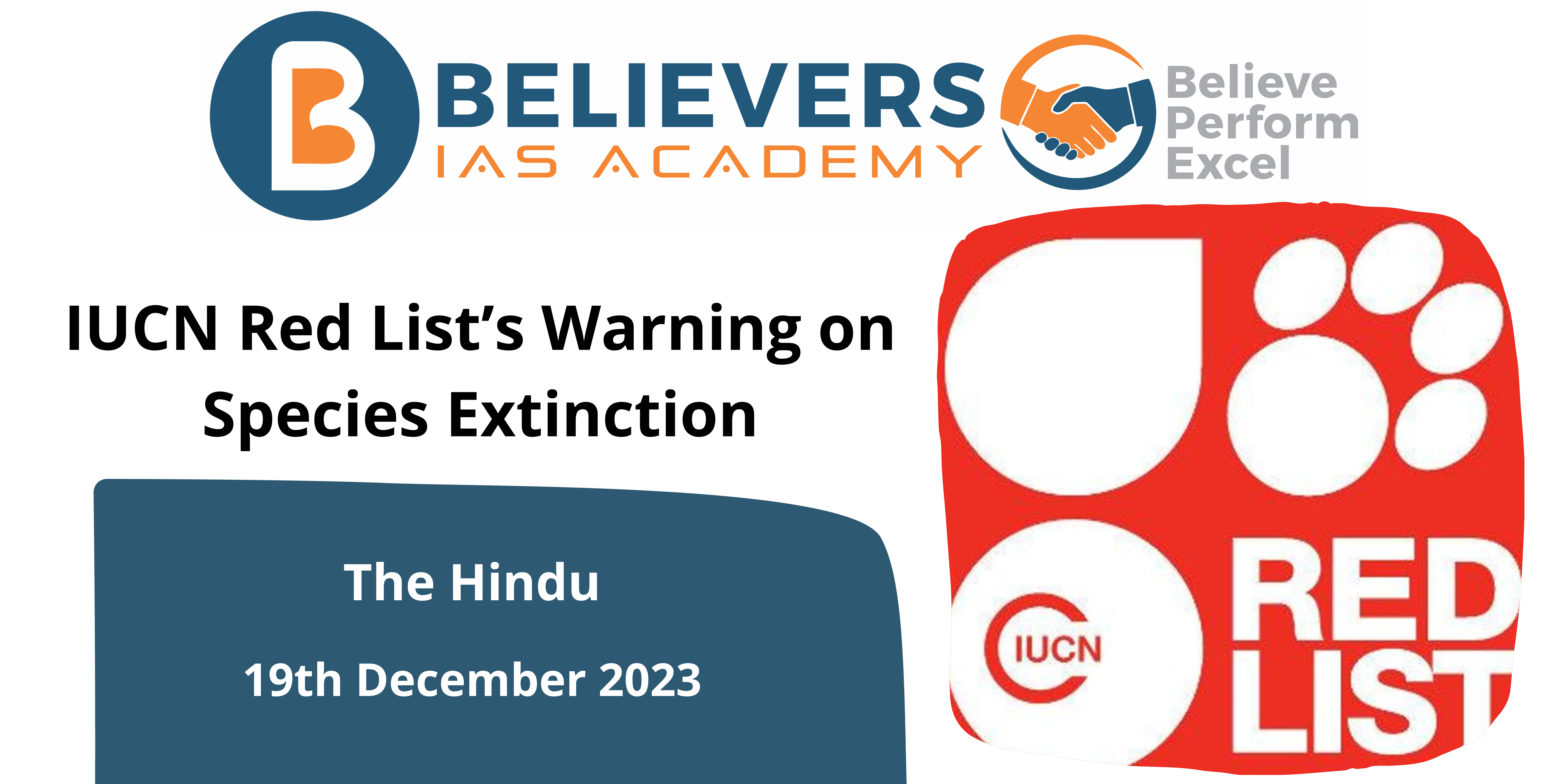IUCN Red List’s Warning on Species Extinction
Context:
The International Union for the Conservation of Nature (IUCN) Red List, divulged during the 28th Conference of Parties, unfolds the pressing impact of climate change on an extensive spectrum of species.
- Within this update lie 157,190 species, among which 44,016 are grappling with the ominous threat of extinction.
Relevance:
GS -03 (Environment and Ecology)
Key Highlights of the IUCN Red List Report:
- Species Threatened by Climate Change: In this alarming revelation, species ranging from the majestic Atlantic salmon to the gentle green turtles find themselves perilously endangered due to climate change.
- The Director General of IUCN underlines the urgency for swift and bold climate action to counteract the impending decline of these species.
- The report emphasizes the link between climate and biodiversity crises, advocating collaborative endeavors for sustainable solutions.
- Freshwater Fish Assessment: A pioneering assessment of global freshwater fish species surfaces, disclosing that a staggering 25% of assessed species face the looming specter of extinction. Contributing factors encompass climate change, pollution, overfishing, and the intrusion of invasive species.
- Atlantic Salmon Decline: The North Atlantic’s ray-finned denizen, the Atlantic salmon, witnesses a disheartening 23% decline from 2006 to 2020. This downturn catapults them from the seemingly secure “Least Concern” category to the more precarious “Near Threatened” designation.
- Green Turtle Populations: The Central South Pacific and East Pacific green turtle populations confront a concerning fate, classified as “Endangered” and “Vulnerable,” respectively. The intricacies of their life cycle bear the brunt of climate change, impacting hatching success and disrupting their food sources.
- Big-Leaf Mahogany Status: Big-leaf mahogany, a coveted timber tree, undergoes a perilous transition from “Vulnerable” to “Endangered.” Unsustainable harvest, encroaching urbanization, and illicit logging collectively lead to a staggering 60% reduction over 180 years.
- Scimitar-Horned Oryx and Saiga Antelope: The desert-dwelling scimitar-horned oryx maneuvers from the grim status of “Extinct in the Wild” to the more hopeful “Endangered.” Successful reintroduction initiatives in the Republic of Chad spearhead this positive shift. Simultaneously, the saiga antelope witnesses an improvement from “Critically Endangered” to the less ominous “Near Threatened,”.
IUCN Red List:
- International Union for the Conservation of Nature (IUCN) Red List is a global tool assessing extinction risks in animals, fungi, and plants, providing vital insights into biodiversity health, threats, and conservation measures.
- The nine IUCN Red List Categories, ranging from NE (Not Evaluated) to EX (Extinct), classify species’ extinction risk, with CR, EN, and VU denoting threatened status.
- Key Role: It acts as an invaluable resource shaping conservation decisions and policies. The Red List is pivotal for gauging progress toward Sustainable Development Goals and Aichi Targets, ensuring a comprehensive understanding of global biodiversity.
- Green Status of Species: Integrated into the Red List, the IUCN Green Status evaluates species’ population recovery and conservation success. The eight categories, including Extinct in the Wild and Fully Recovered, offer a nuanced assessment of species conservation.
- Significance: The Green Status assessment critically analyzes the impact of conservation actions on the current Red List status, enhancing the understanding of conservation efficacy and highlighting areas for improvement.




